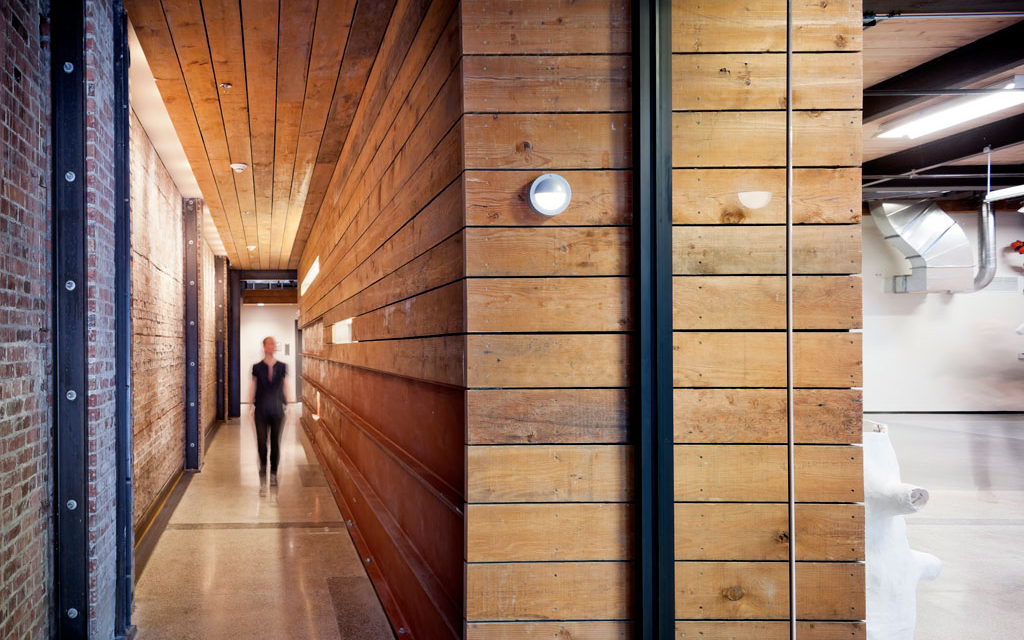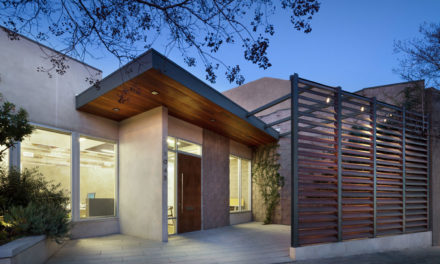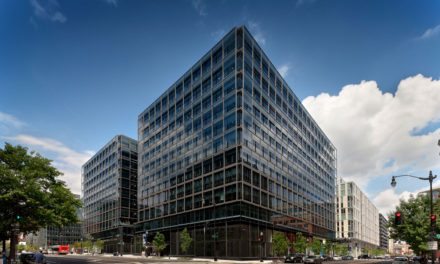Part arts initiative and part residential development, 325 Westlake merges old and new structures to create a building that preserves the character of the existing building and the site, while ensuring its continued usefulness. Rents from the residential development fund MadArt, an arts initiative focused on connecting emerging artists with the community in unexpected ways. MadArt, which runs the studio space occupying the storefront, makes it possible to engage with art and artists every day, making artists and residents richer through their programmatic partnership.
Graham Baba Architects, a Seattle architecture firm well known for the successful place-making of commercial, residential and arts spaces, designed this innovative space. “The project embodies an incredibly diverse mix of programs…not just a studio, not just a gallery, not just a place to live…it’s all of these uses combined and catalyzed to sustain the mission of supporting emerging artists,” said Jim Graham, AIA, principal, Graham Baba Architects.
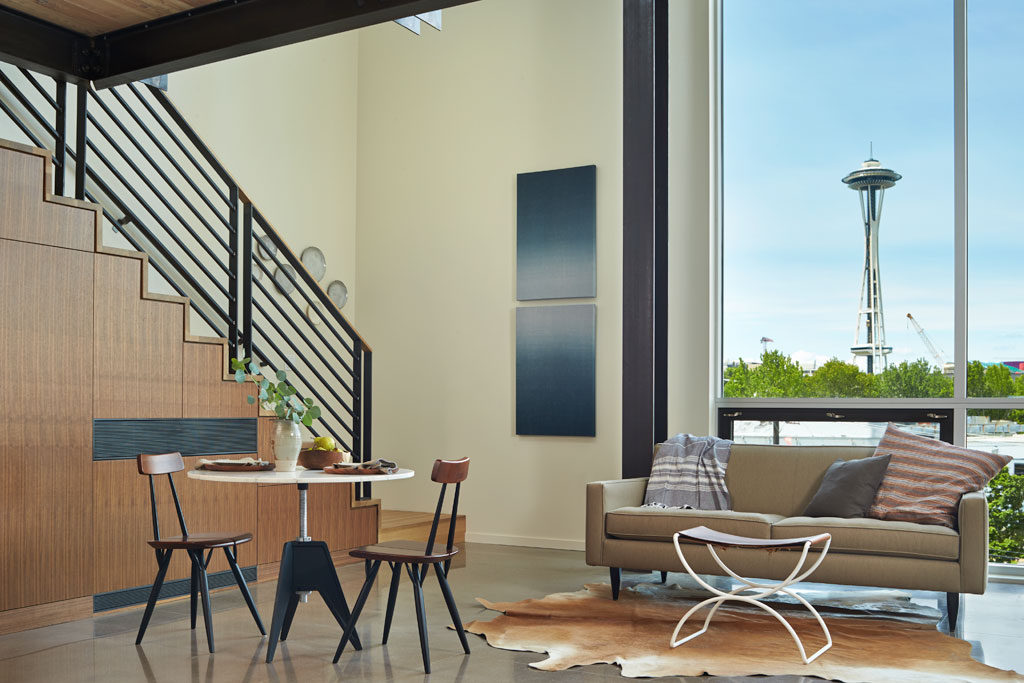
Credit: © Benjamin Benschneider
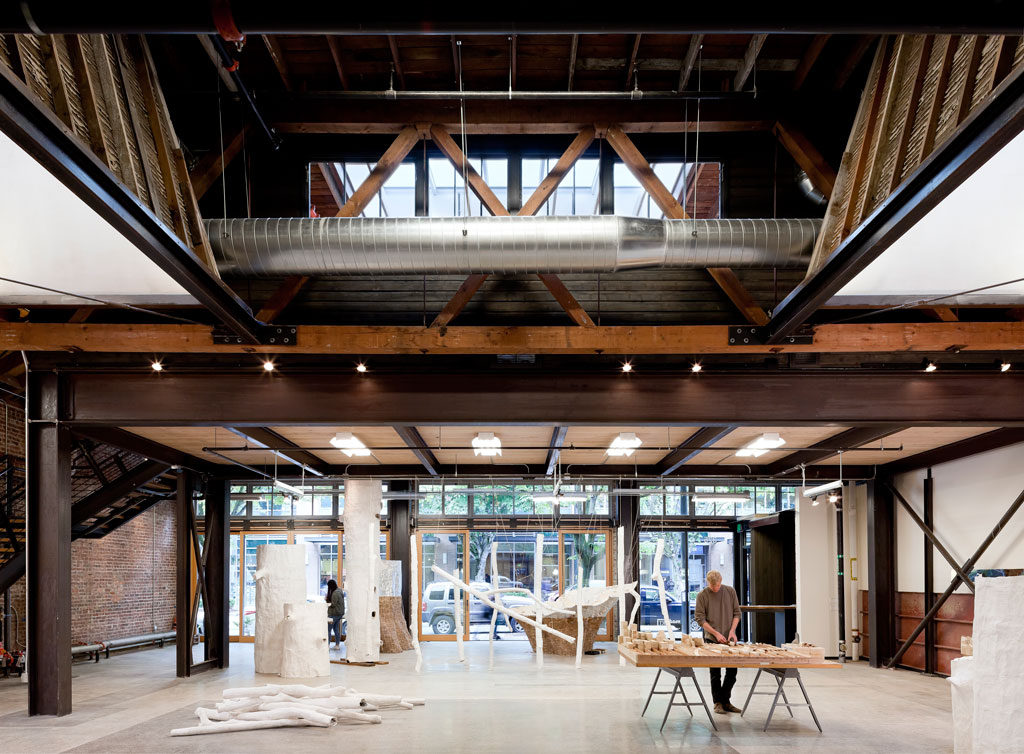
Credit: © Tim Bies
The design pairs a 1927, one-story, masonry-and-wood building with a five-story, steel-and-glass addition. The new structure occupies a narrow, 3,240-square-foot slice of the site created by demolishing the back half of the old structure, which had been structurally compromised over the years. The historic structure, originally a car dealership, is stripped back to its bones, yielding an art-making space that is open to the neighborhood and encourages engagement between artists and pedestrians. “Half-preservation, half new construction, the design stabilizes the historic structure—preserving the legacy of the neighborhood—while creating opportunities to address the inevitable changes that face urban neighborhoods,” said Graham.
Full-height, sliding wood windows along Westlake Avenue reveal the art-making process and invite people in, while the addition of awnings overhead provides protection from the elements and encourages passers-by to linger.
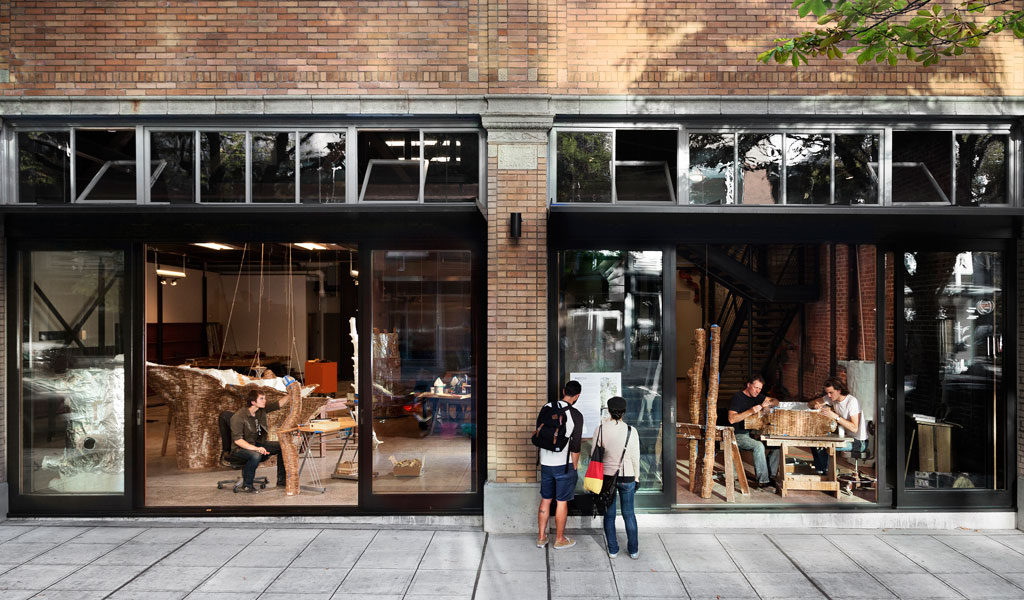
Credit: © James Harnois
Building upgrades—including seismic steel moment frames, a new roof, and enhanced mechanical and electrical systems—round out the improvements to the older building. A mezzanine, inserted between two of the large Howe trusses in the old building, is daylit by a large, 13×15-foot skylight, which opens up views from the street to the apartments above and provides office space for MadArt.
The 19,910-square-foot addition houses twelve residential units—ten lofts, a one bedroom flat, and a penthouse apartment. Outdoor living at each unit including a wrap-around balcony for the penthouse, and a shared roof deck, provide unique exterior views and neighborhood connections. No-nonsense in its aesthetic, the addition shares the utilitarian spirit of the older structure. Finishes include polished concrete floors, aluminum windows, steel structure, and salvaged and repurposed wood windows used to enclose the mezzanine and wood roof sheathing used for common area wall surfaces. By preserving the historic, pedestrian-oriented character of the neighborhood, the building provides neighborhood continuity and activation, and a new way to think about living with art.
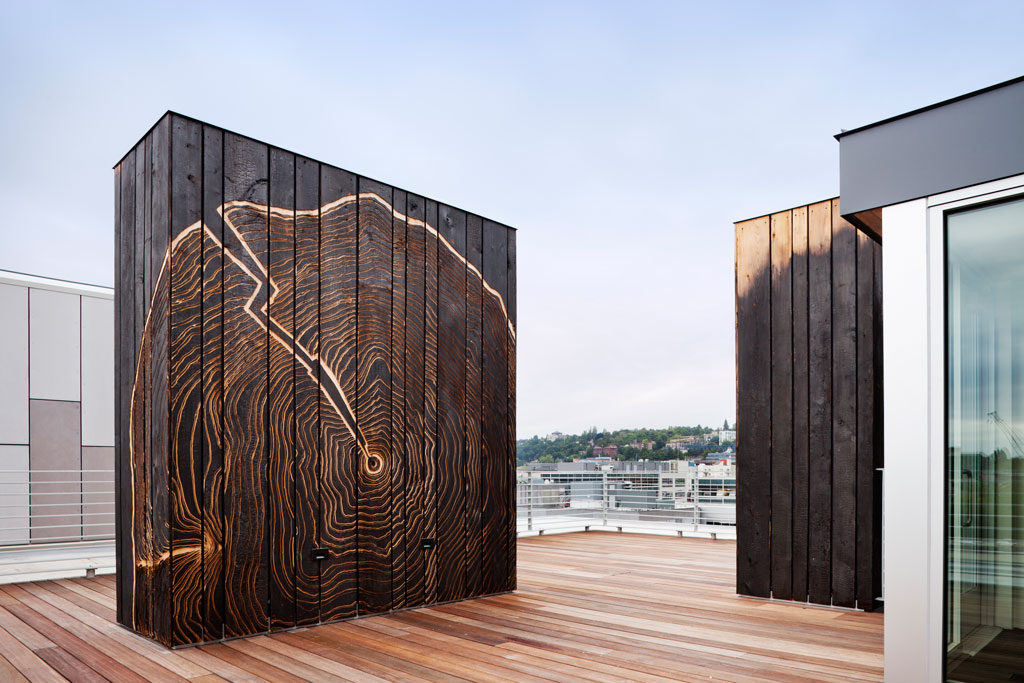
Credit: Tim Bies
Graham Baba Architects design team
Brett Baba, Jim Graham, Leann Crist, Lauren Strang
Project team
Graham Baba Architects (architecture)
MA Wright Structural Engineers (structural engineering)
PanGeo Geotechnical Engineers (geotechnical engineering)
Lighting Designs, Inc. (lighting)
JRS Engineering (building envelope)
Sparling (acoustical)
Brian Paquette Interiors (loft apartment styling)
Electrical (design build)
Inform Interiors (penthouse styling)
Schuchart (contractor)
Photography
Benjamin Benschneider, Tim Bies, James Harnois
Materials
Steel structure; concrete metal deck and wood decking floors; metal, wood, and cement board siding; existing heavy timber with masonry walls; Wausau aluminum windows; Quantum wood sliders at the street level; wood casework; composite stone countertops; polished concrete floors; and wood floors.
Graham Baba Architects
Graham Baba Architects is a Seattle-based architecture firm recognized for the successful place-making of commercial, residential, and cultural spaces. Whether enlivening an urban community or creating a quiet refuge, we strive to design venues that resonate with memory and a sense of discovery. the firm believes every project—from adaptive reuse of existing buildings to new construction—provides an opportunity to reveal and celebrate authentic materials in their natural state. Founded in 2006, the firm began its existence creating signature spaces for some of Seattle’s top chefs, including restaurants for a number of James Beard Award winners and nominees. Today, the firm’s work is diverse, encompassing residences to adaptive reuse projects, and stand-alone buildings to tenant improvements. Project can be found across the West Coast and central US, with new projects to be located in New Jersey and New York. Among the firm’s notable projects are the Melrose Market, Kolstrand Building, and 325 Westlake in Seattle; Pybus Market in Wenatchee, Washington; and the Washington Fruit & Produce Co. Headquarters in Yakima, Washington. Most recently the firm completed the studio for artist Lino Tagliapietra in Seattle, and the Hanger, a community building for the City of Kenmore, Washington.

